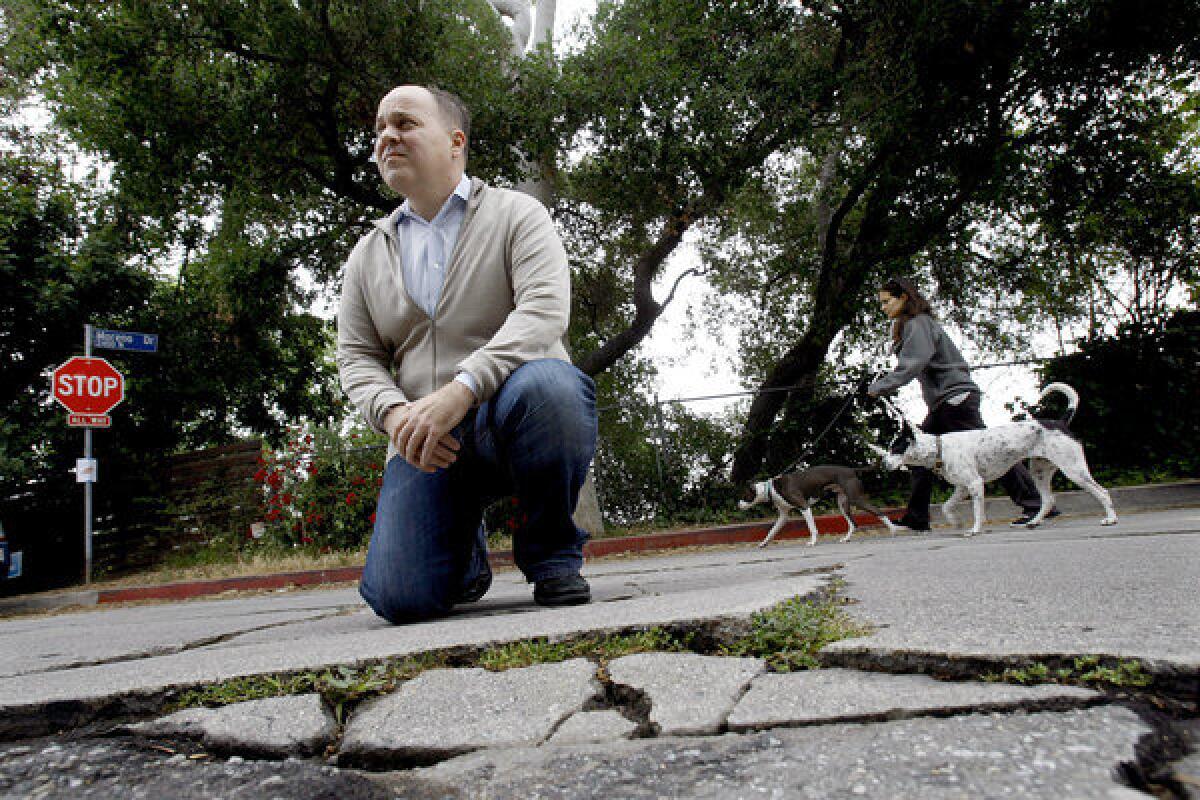L.A. Now Live: Grading Los Angeles’ streets

A Times analysis of street inspection data found wide disparities in road quality among the city’s 114 neighborhoods.
The streets in the newer development of Playa Vista, which the city’s database gives the highest ranking with an average grade of B, scored 80% higher than those in Silver Lake, which ranks among the worst with a D-minus average.
Join us at 9 a.m. as we discuss the Times analysis and L.A. road conditions with Times writer Ben Poston.
The differences are not driven by wealth or political power. In fact, some of the poorest parts of the city have some of the best roads.
The heart of the problem is aging streets, heavy traffic, undulating terrain and the sheer size of the network. The streets in the poorest shape tend to be in hillside neighborhoods, such as the Hollywood Hills, Mount Washington, Los Feliz and Bel-Air.
But layered on top of those problems is a street repair strategy that bypasses the worst streets in favor of preserving salvageable ones. Street officials have also made a political decision to bring the overall grade of roads in each City Council district to the same level.
For Angelenos waiting for their street to be rebuilt, abandon all hope: There is a 60-year backlog of failed streets — meaning residents might not see them fixed in their lifetimes.
More to Read
Start your day right
Sign up for Essential California for news, features and recommendations from the L.A. Times and beyond in your inbox six days a week.
You may occasionally receive promotional content from the Los Angeles Times.






